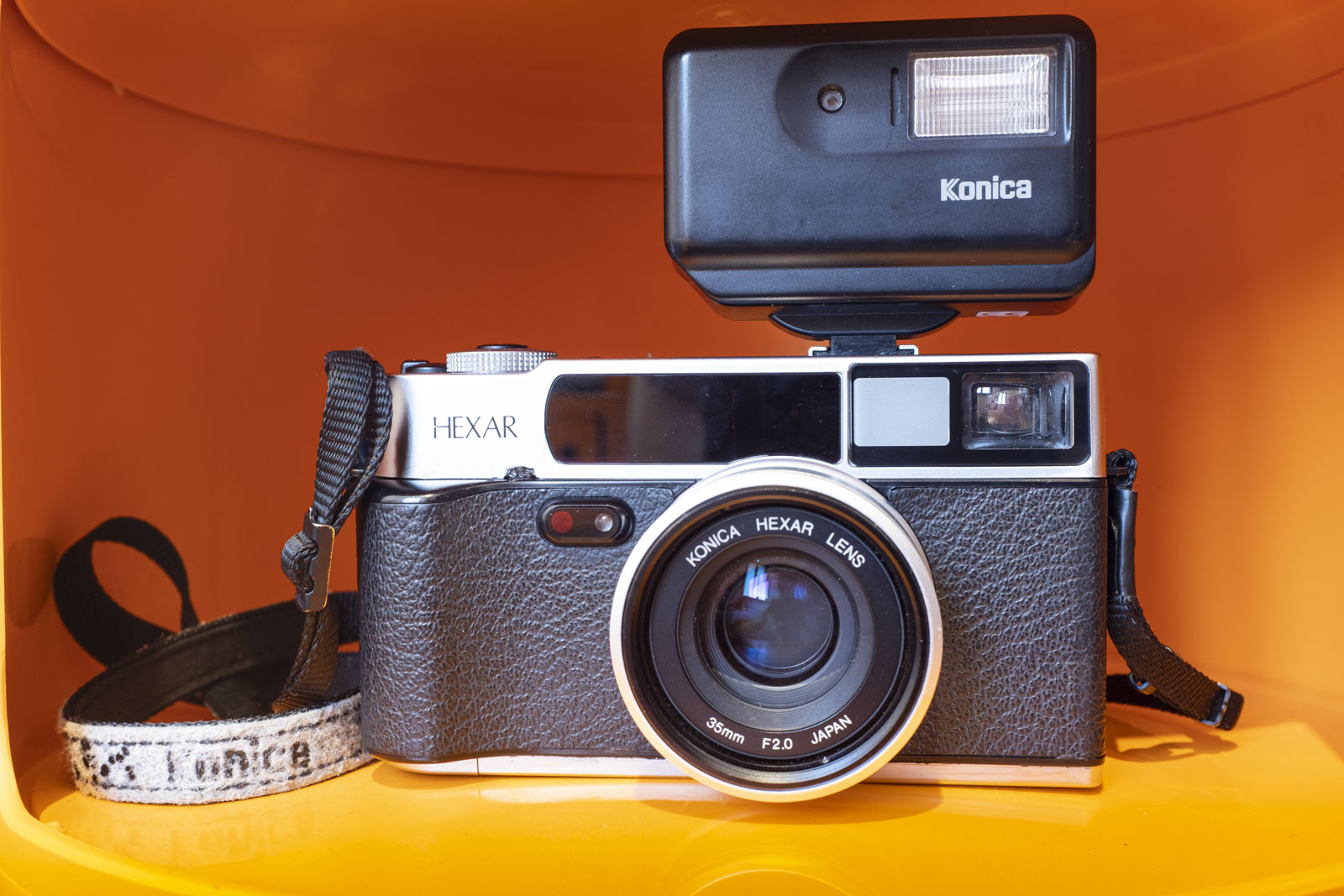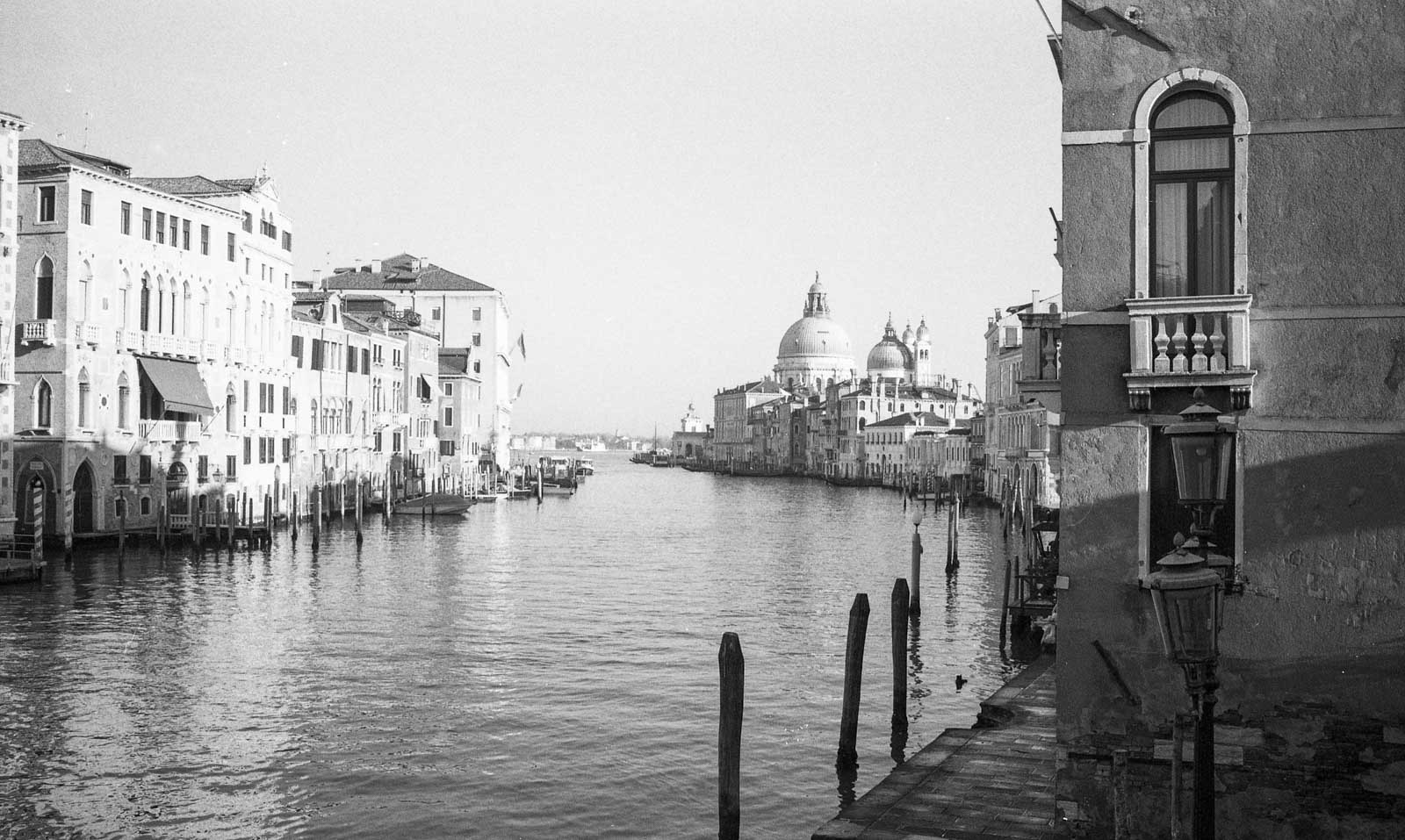TOC
Point and shoot are always a polarizing topic among photographers. It is often difficult to define a hierarchy of their essential attributes. Someone will prefer compactness, while for someone else the design will be decisive, for others, finally, the image quality will be fundamental. Within the category, we can find two extremes: ultra-compact cameras, for example, the excellent Minox, and super-luxury point & shoot cameras. Among the latter, we will conveniently place the various Contax T, Nikon 35, and Rollei 35, machines capable of rivaling in quality and style with the best SLRs of their time.
The Konica Hexar is perhaps less known and does not enjoy the wide popularity - especially today - of the T series. In reality, the model was a moderate success in 1993 when it was marketed, so much so that it was re-proposed in the silver version in 1997. The production continued even after the merger between Konica and Minolta, ending with the acquisition of Sony in 2006. It was a machine that could easily reach $ 1,000 already in the 90s, almost $ 1,800 at current exchange rates. Despite this, today the Hexar AF does not enjoy the popularity of the other contemporary cameras that we have already mentioned. The reason can be explained by the fact that it is not clear what we have in front of us. It is too elaborate (and expensive) for a point & shoot and with too many automatisms to be an authentic 360° camera. This dual nature immediately put it in a complicated place compared to its rivals, coming to compete more with the Contax G series than with the T series. Despite all its advantages, it could not compete against the best 35mm analog camera ever built and the advent of digital has made the fame of this little gem go down. Within this article, however, we will look at how we are dealing with a real point & shoot and probably the best ever designed!

The external flash allows the camera to be used in low-light situation, however the shutter is so quiet that you can shoot 1/15 without any shake
Unlike other cameras of its era, the Konica Hexar AF does not need to be turned on to extract the lens, but it is open at any time. To operate it, you just need to turn it on and shoot, as the reaction time is minimal. The first version - the non-Silver one - boasted a silent mode (called stealth mode) which has become a cult feature among photographers. The silver version does not have it, but for the more daring ones, there are dozens of tutorials on the web. In reality, a silent mode is almost useless as the camera is already very quiet in itself, by far one of the quietest models ever built, capable of rivaling and beating the Leica M series despite the automatic advancement. On the contrary, the first few times you use it, you run the risk of taking the same photograph twice because you don’t notice the shutter noise if there is absolute silence.
One component that, in my opinion, is not recognized enough in this camera is its design. If we think about how many products of the 90s are terribly aged today, on the contrary, the Hexar AF remains a sinuous and modern object today. The aspect component is fundamental for me in point & shoots: they have always been a real accessory, and some designs have aged better than others. Unlike many of its competitors of the same years, the Konica is still a machine capable of attracting attention with its elegance. Some might argue that this makes the photographer’s job more difficult, as he loses part of his discretion. If you want to “steal” some shots of a luxury point & shoot, it’s never a good idea and if you want to keep autofocus, you should turn to an Olympus MJU. However, more and more we are realizing the unique design of this model, so much so that in recent years the prices have exploded.

Even in bright light diffraction is never a problem, despite the 1/250 of a second limit
The real limitations of the Hexar are its fixed focal length, which makes it inferior to the G system for anything that does not require a 35mm focal length, and the shutter. At the price of a great silence, however, it is not capable of going beyond 1/250 of a second. Is that a problem? I thought a lot more before buying this machine. Of course, with fast films in bright light conditions, you risk overexposure, but this is rare, given the large dynamic range of the films. The film then lends itself much better than digital to overexposure, so this is not a big problem. However, this often causes the diaphragm to close a lot, which is not bad in itself. The lens seems practically immune (except perhaps at minimum aperture) to evident diffraction phenomena, but there could be problems if you try to shoot at f2 in broad daylight. This camera, however, unlike other point & shoot, allows the use of filters. At worst, I would recommend using a 46mm ND filter.
Let’s now pass to the most famous and certainly best-known point: the lens. This 35mm f2 has often been associated with the 35mm Summicron Leica. I will not enter here into the dispute as to whether there is a similarity between the two drawings, which appear different in the number of groups. Compared to the Summicron this lens is perhaps even more defined, thanks to the extraordinary compactness and proximity to the focal plane. However, the element it shares with its Leica counterpart is the extraordinary tonal richness. Historically, Japanese lenses have often presented an extraordinary resolution, coupled with poor tonal richness. On the contrary, this lens seems to combine the best of the two schools, so much so that it is sometimes cannibalized and worn on an M bayonet. The value for money, even considering it similar to Summicron, is stellar: at almost a quarter of its value, we take home a faster and quieter machine than any Leica ever made. Of course, the viewfinder is not as good as a Leica, just as the manual settings are difficult, but for anyone who wants to use the automatisms, this camera immediately reveals itself as superior. Certainly, it is infinitely superior to the contemporary Minilux Leica, which is not even comparable in design, performance, and lens compared to this model.

In addition to being a quality lens, the Hexanon 35mm f2 is a lens with personality, something not common on a point & shoot
Unfortunately, Konica herself never believed too much in this project. There was little advertising, as well as distribution channels outside Japan. Up to the last attempt was made to promote the Konica RF, an electronic copy of a Leica. The latter, in many respects superior, clashed with the fact that the Leica is a cult object, a status symbol rather than a camera and it is useless to try to compete with it on a “rational” level. The Hexar, on the other hand, is a modern mix of speed, lightness, design, and optical quality. It is not a camera suitable for everyone, I do not recommend it to those who feel they need the versatility of zoom or interchangeable lenses. It will not find favor with those who reject automatisms in the name of complete control of all functions. For those who want a fantastic 35mm AF point & shoot, capable of delivering high-quality photos, there is no better camera. Konica deserves the credit for having created - but not understood - what must be in the definitive point & shoot: operational speed, combined with the optical quality of the Leica and an innovative design. If it is sad to think that hardly anyone noticed it in the past, it is nice to see how more and more people are seeing it today!

The tonal richness is impressive and it is easy to see how it was immediately compared to the Summicron by Leica